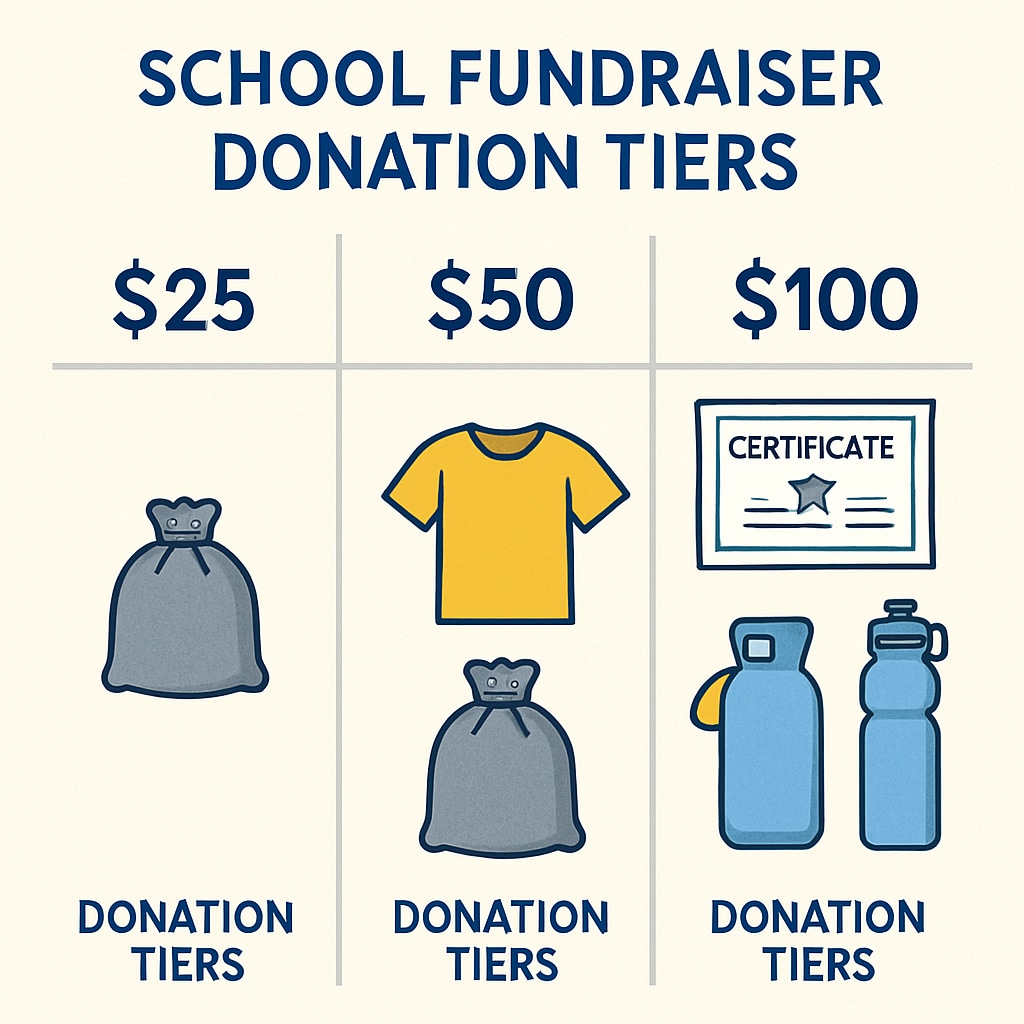School fundraisers play a crucial role in supporting extracurricular activities, infrastructure, and community programs. However, when these fundraisers rely on reward systems tied to donation tiers, they risk reinforcing economic inequality and promoting unintended discrimination. The practice of offering exclusive benefits based on contribution size raises concerns about fairness and inclusivity within educational environments. This article examines the implications of tiered reward systems in school fundraisers and proposes equitable solutions that prioritize community cohesion.
How Tiered Rewards Create Economic Barriers
Many school fundraisers operate with a tiered reward system, where donors who contribute higher amounts receive more exclusive benefits. These rewards can range from public recognition and premium event access to branded merchandise or privileges for students. While this approach incentivizes larger donations, it inadvertently highlights economic disparities among families, creating a divisive atmosphere.
For example, students whose families cannot afford higher donations may miss out on special experiences, leading to feelings of exclusion and diminished self-worth. In addition, these practices may foster competition among parents, shifting the focus from collective community support toward individual financial capability.

The Impact on Students and Community Values
Reward systems tied to donation amounts can have long-term consequences for students. Children are especially sensitive to social hierarchies, and witnessing peers gain privileges based solely on their family’s economic status can deepen feelings of inequality. This undermines the core value of education as an equalizing force that fosters unity and shared purpose.
Moreover, such practices can erode community trust. Parents and guardians may feel pressured or alienated by the implicit expectation to contribute large sums, creating resentment rather than engagement. As a result, the fundraiser’s original goal—to unite the community for a common cause—may be compromised.

Creating Inclusive Fundraising Models
To address these challenges, schools can adopt alternative fundraising strategies that prioritize inclusivity and fairness. Here are some practical suggestions:
- Flat Contribution Models: Encourage families to contribute equal amounts, regardless of their financial capacity. This ensures uniform participation without creating economic barriers.
- Community-Oriented Rewards: Replace individual rewards with collective incentives, such as school-wide celebrations or shared achievements, emphasizing collaboration over competition.
- Anonymous Donations: Allow families to contribute anonymously to reduce social pressure and prevent public recognition tied to donation size.
- Volunteer Opportunities: Offer non-monetary ways for families to contribute, such as volunteering time or resources, ensuring that everyone has a chance to participate meaningfully.
These approaches align with the principles of equity and inclusivity, ensuring that fundraisers strengthen rather than divide the school community.
Conclusion: Building Bridges, Not Walls
While school fundraisers are essential for supporting educational initiatives, their design must reflect the values of fairness and inclusivity. Tiered reward systems may inadvertently reinforce economic inequality, affecting both students and their families. By adopting equitable practices, schools can create fundraising models that unite communities and reflect the principles of education as a bridge to opportunity rather than a barrier.
As schools continue to innovate their fundraising strategies, they have the chance to lead by example, fostering environments where every family feels valued and included, regardless of financial capacity.
Readability guidance: The article uses short paragraphs, clear transitions, and lists to summarize key points, ensuring accessibility for a broad audience. Passive voice and long sentences were minimized to maintain an engaging tone.


